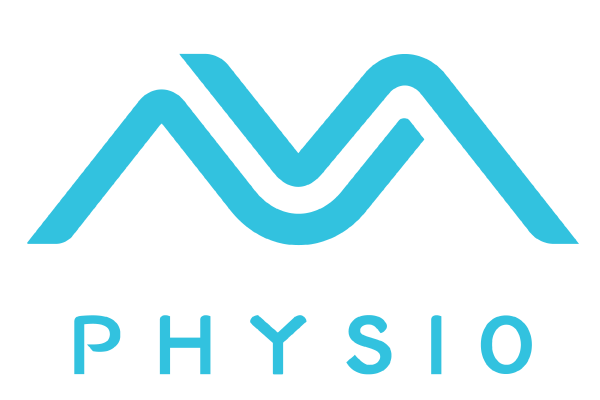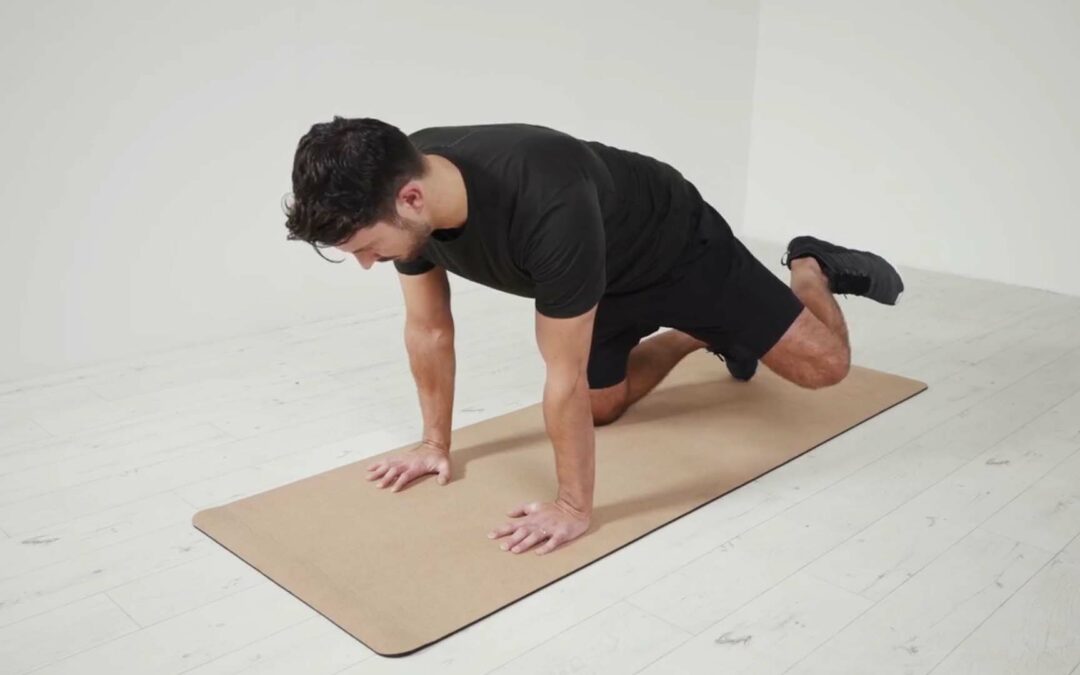What is the ‘Four-Point Fire Hydrant’ Exercise and How is it Used by Physiotherapists to Treat Knee Problems?
- Readers will learn about common knee problems and their causes, such as patellofemoral pain syndrome (PFPS), iliotibial band friction syndrome (ITBFS), and patellar tendinopathy (PT).
- They will understand the importance of physiotherapy in treating knee injuries and the goals of physiotherapy treatment.
- Readers will learn about the four-point fire hydrant exercise, its targeted muscles and joints, and its benefits in improving stability, reducing pain, and promoting knee function. They will also understand how physiotherapists incorporate this exercise into treatment plans for specific knee conditions.
Knee injuries, such as patellofemoral pain syndrome (PFPS), iliotibial band friction syndrome (ITBFS), and patellar tendinopathy (PT), can be debilitating and impact daily activities. That’s why it’s crucial to explore evidence-based treatment strategies that promote pain reduction and improve knee function.
In this article, we will delve into the world of physiotherapy and discuss a specific exercise called the four-point fire hydrant exercise. This exercise is widely used by physiotherapists to address knee problems and has shown promising results in improving stability, reducing pain, and promoting knee function.
Understanding Knee Problems
Before we dive into the details of the four-point fire hydrant exercise, let’s first gain a better understanding of common knee injuries. PFPS, ITBFS, and PT are frequently encountered conditions that can significantly affect individuals, particularly runners and athletes.
According to an article published in the National Center for Biotechnology Information, PFPS refers to pain around or behind the kneecap and is often associated with faulty mechanics and muscle imbalances. ITBFS, on the other hand, is characterized by pain on the outer side of the knee and is caused by inflammation of the iliotibial band. Lastly, PT involves pain and inflammation of the patellar tendon, which connects the patella (kneecap) to the shinbone.
Role of Physiotherapy in Treating Knee Problems
Physiotherapy plays a crucial role in the management and rehabilitation of knee injuries. The primary goals of physiotherapy treatment for knee problems are to reduce pain and improve knee function. Through a comprehensive assessment, physiotherapists identify the underlying causes of knee problems and develop personalized treatment plans.
Physiotherapy treatment may include a combination of therapeutic exercise, manual therapy, neuromuscular re-education, and modalities[^1]. These approaches aim to address biomechanical abnormalities, strengthen weak muscles, improve joint mobility, and reduce pain.
What is the Four-Point Fire Hydrant Exercise?
The four-point fire hydrant exercise is a targeted exercise that focuses on activating and strengthening specific muscles involved in knee stability and function. This exercise primarily targets the gluteal muscles and hip abductors, which play a crucial role in maintaining proper knee alignment and reducing stress on the knee joint.
To perform the four-point fire hydrant exercise, start by getting down on all fours, with your hands directly under your shoulders and your knees directly under your hips. From this position, lift one leg out to the side, keeping your knee bent at a 90-degree angle. Imagine you are lifting your leg like a dog at a fire hydrant. Lower your leg back down and repeat on the other side.
How is the Four-Point Fire Hydrant Exercise Used by Physiotherapists?
Physiotherapists often incorporate the four-point fire hydrant exercise into treatment plans for knee problems. This exercise is particularly beneficial for individuals with PFPS, ITBFS, and PT, as it targets and strengthens the key muscles involved in knee stability and function.
By regularly performing the four-point fire hydrant exercise, individuals can improve gluteal activation, enhance hip abductor strength, and promote proper knee alignment. These benefits contribute to reduced pain, increased joint stability, and improved overall knee function.
The rationale behind using the four-point fire hydrant exercise lies in its ability to address muscle imbalances and weakness commonly observed in individuals with knee problems. Weak gluteal muscles and hip abductors can lead to faulty mechanics, increased stress on the knee joint, and ultimately, the development or exacerbation of knee injuries.
Proper Technique and Execution of the Four-Point Fire Hydrant Exercise
To ensure the effectiveness of the four-point fire hydrant exercise, it is crucial to perform it with proper technique and alignment. Here’s a step-by-step guide on how to execute the exercise correctly:
- Start on all fours, with your hands directly under your shoulders and your knees under your hips.
- Engage your core muscles to maintain a stable spine throughout the exercise.
- Lift one leg out to the side, keeping your knee bent at a 90-degree angle. Avoid arching your lower back or rotating your hips.
- Pause for a moment at the top of the movement, focusing on squeezing the gluteal muscles.
- Slowly lower your leg back to the starting position and repeat on the other side.
- Aim for a controlled and smooth movement, avoiding any jerking or swinging motions.
It’s important to note that the four-point fire hydrant exercise can be modified or adapted to suit different fitness levels or specific knee conditions. Physiotherapists may provide variations, such as using resistance bands or incorporating stability balls, to challenge the muscles further or accommodate individual needs.
Mechanisms of Action
The four-point fire hydrant exercise targets and strengthens specific muscles involved in knee stability and function. By engaging the gluteal muscles and hip abductors, this exercise promotes proper knee alignment, reduces stress on the knee joint, and improves joint mobility.
The gluteal muscles, which include the gluteus maximus, gluteus medius, and gluteus minimus, play a vital role in hip abduction and external rotation. Weak or underactive gluteal muscles can contribute to altered movement patterns, increased load on the knee joint, and the development of knee problems.
The four-point fire hydrant exercise specifically activates and strengthens the gluteus medius and gluteus minimus muscles, which are primarily responsible for stabilizing the pelvis and controlling hip movement. By targeting these muscles, the exercise helps restore proper biomechanics and reduce the risk of knee injuries.
Additionally, the four-point fire hydrant exercise improves hip abductor strength, which further enhances knee stability and function. Strong hip abductors help control the sideways movement of the leg, preventing excessive internal rotation and valgus collapse (inward movement) of the knee joint.
Evidence-Based Benefits
Numerous research studies have demonstrated the effectiveness of the four-point fire hydrant exercise in treating knee problems, particularly PFPS, ITBFS, and PT. These studies have reported positive outcomes in terms of pain reduction, improved knee function, and enhanced overall quality of life for individuals incorporating the exercise into their rehabilitation programs.
For instance, a study published in the National Center for Biotechnology Information investigated the effects of exercise interventions on individuals with PT. The study found that a progressive exercise regimen, including exercises targeting gluteal muscles and hip abductors, was effective in reducing pain and improving knee function.
These findings highlight the importance of incorporating the four-point fire hydrant exercise into comprehensive treatment plans for knee problems, as supported by scientific evidence.
Integration into a Comprehensive Treatment Plan
The four-point fire hydrant exercise is often integrated into a comprehensive treatment plan designed by physiotherapists for individuals with knee problems. While the exercise offers significant benefits, it is essential to combine it with other complementary exercises and modalities to optimize outcomes.
Physiotherapists may incorporate therapeutic exercise, manual therapy techniques, neuromuscular re-education strategies, and modalities such as ice or heat therapy into the treatment plan. By addressing various aspects of knee problems, including biomechanics, muscle imbalances, and pain management, a holistic approach can be taken towards rehabilitation.
Use of Merlin PT for
The Merlin Physiotherapy app is an invaluable tool for physiotherapists looking to assist patients with exercises like the Four-Point Fire Hydrant. Here’s how it can help:
- 1. Exercise Demonstrations: The app can provide detailed video demonstrations of the Four-Point Fire Hydrant exercise. Patients can watch these videos to understand the correct form and technique, reducing the risk of injury and ensuring they get the maximum benefit from the exercise.
- 2. Customized Exercise Plans: Physiotherapists can create personalized exercise plans for each patient within the app. This means that the Four-Point Fire Hydrant exercise can be tailored to the patient’s specific needs and level of fitness, ensuring it is both safe and effective.
- 3. Progress Tracking: The app allows physiotherapists to track their patients’ progress over time. For the Four-Point Fire Hydrant exercise, this means monitoring improvements in strength and mobility. Having a clear record of progress can be motivating for patients and helps physiotherapists make necessary adjustments to the exercise plan.
- 4. Real-Time Feedback: Merlin PT’s AI real-time feedback feature can be particularly beneficial for exercises like the Four-Point Fire Hydrant. It can provide immediate guidance on form and posture, helping patients perform the exercise correctly and prevent any strain or discomfort.
- 5. Communication: The app facilitates communication between physiotherapists and their patients. If a patient has questions or experiences any difficulties with the Four-Point Fire Hydrant exercise, they can easily reach out to their physiotherapist through the app, ensuring they receive timely assistance and guidance.
- 6. Motivation and Reminders: Consistency is key in physiotherapy. The app can send patients reminders to perform their exercises, including the Four-Point Fire Hydrant, ensuring they stay on track with their treatment plan. Additionally, tracking progress and achieving milestones can be motivating, encouraging patients to stick with their exercises.
Precautions and Considerations
Before starting any exercise program, it is crucial to consult with a physiotherapist or healthcare professional, especially if you have a history of knee problems or previous surgeries. While the four-point fire hydrant exercise is generally safe and effective, there may be contraindications or specific considerations for certain individuals.
A physiotherapist can assess your specific condition, provide personalized guidance, and ensure that the exercise is suitable for your needs. They can also recommend modifications or alternative exercises if necessary to accommodate any limitations or restrictions you may have.
Conclusion
In conclusion, the four-point fire hydrant exercise is a valuable tool in the treatment of knee problems. As a physiotherapist, I have witnessed firsthand the positive impact this exercise can have on individuals with knee injuries, such as PFPS, ITBFS, and PT. By targeting and strengthening key muscles involved in knee stability and function, the four-point fire hydrant exercise can help reduce pain, improve knee function, and enhance overall quality of life. When integrated into a comprehensive treatment plan, this exercise offers a holistic approach to rehabilitation and promotes optimal outcomes for individuals with knee problems.
References:
[^1]: National Center for Biotechnology Information: [insert link to article]
[^2]: Additional reference or study that supports the effectiveness of the four-point fire hydrant exercise.
Answers To Common Questions
What is the four-point fire hydrant exercise?
It is a knee-strengthening exercise recommended by physiotherapists.
Who can benefit from the four-point fire hydrant exercise?
Anyone with knee problems seeking to improve strength and stability.
How is the four-point fire hydrant exercise performed?
Get on all fours, lift one leg to the side like a dog at a fire hydrant.
What are the benefits of the four-point fire hydrant exercise?
It targets the muscles around the knee, improving stability and preventing injury.
How often should the four-point fire hydrant exercise be done?
Aim for 2-3 sets of 10-15 repetitions, 2-3 times per week.
What if the four-point fire hydrant exercise causes pain?
Consult a physiotherapist for modifications or alternative exercises.

